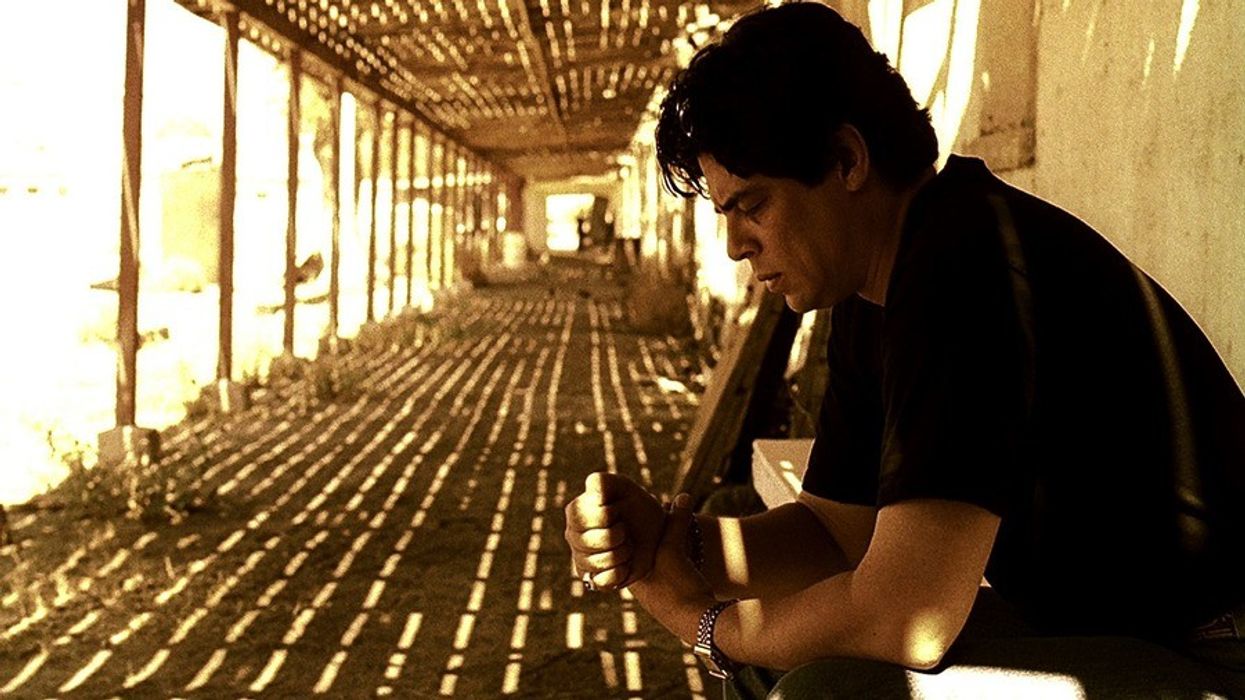Watch: What Soderbergh Does to Give Color the Power of Transformation
For a filmmaker who has worked in almost every genre, Steven Soderbergh tends to favor one approach to color. This video breaks it down.

Steven Soderbergh is a chameleon who's able to turn out big-budget studio fare and experimental low-budget one-offs with equal skill. When you also consider the fact that he frequently acts as his own DP (under the pseudonym "Peter Andrews"), it shouldn't be surprising that Soderbergh is a director for whom color as a cinematic property is a big deal.
This video from Fandor breaks down just how the director uses hues in his various films.
Soderbergh is a director who employs "striking, strong color casts, with the whole frame often saturated with one particular hue." He lives within families of colors and does so for different reasons.
For instance, in Traffic, his 2000 film which follows multiple threads that weave their way through a never-ending war on drugs, he uses color to give each narrative a distinct personality. Michael Douglas' character, the drug czar who is hopelessly ignorant of the havoc being wreaked on his own family, lives in a steely, rule-bound world of blues and blacks.
What's fascinating is that, as the essay points out, though "his films mimic reality," Soderbergh is not a realist. Even though Traffic makes gestures towards realism with its desaturated tones and hand-held camera work, it is an example of how the director uses "dramatic color casts to transport us into a heightened sensory state, and out of reality."
"Dramatic color casts transport us into a heightened sensory state, and out of reality."
The director also deploys color in more traditional ways, to make objects, or characters, pop from the frame. In Erin Brockovich, he uses Julia Roberts' red hair as a starting point for a visual metaphor for her personality and influence on the drabness of her desert environment—all washed out khaki and shades of green that look positively queasy next to her movie star presence and the character's brash persona.
Soderbergh has described his new film, the blue-collar heist flick Logan Lucky, as an "inversion" of his other heist films, where "the landscape, the characters, and the canvass were the complete opposite of an Ocean’s film."
It will be interesting to see how this master of color uses light to trick us into a false verisimilitude, but then again, false senses of reality are at least one part of why we go to the movies, whether we admit it or not. If the world was as vivid as it is on screen, people probably wouldn't bother spending money on tickets and home theaters. The difference between film and every other art, though, is that film is the art closest to reality; audiences expect, whether they know it or not, for there to be a certain truth there, and this gives filmmakers an extra edge.
When we go to the movies, we enter with our eyes wide shut, as it were (catchy title), and a canny director like Soderbergh can use this to their advantage, just like filmmakers have done since the dawn of cinema, when there was only light and shadow to manipulate.
Source: Fandor











